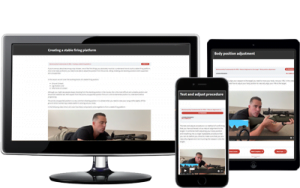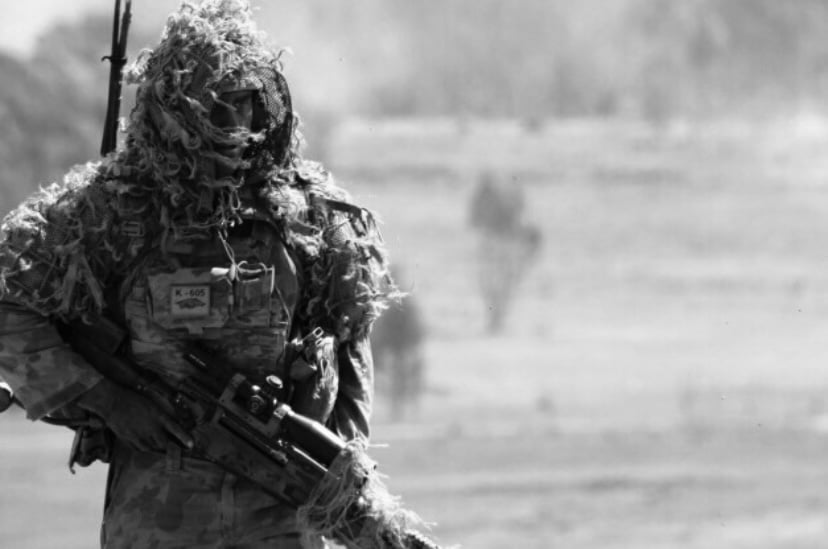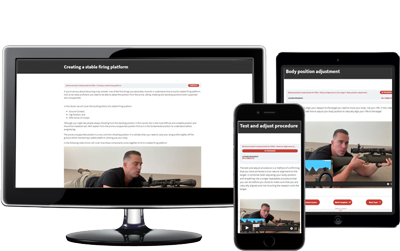No products in the cart.


As a gun owner, you understand the importance of regular firearm training. Whether you’re a responsible firearm owner for self-defense, sports shooting, or hunting, accuracy, precision, and confidence are essential. One training method that’s gaining popularity among gun owners is dry fire training. This article provides an in-depth look at what dry fire training entails and how it benefits gun owners.
Dry firing is one of the most effective ways to improve your shooting skills, and it involves practicing gun handling and shooting fundamentals without live ammunition. In other words, it involves firing your firearm while unloaded. Dry fire training can be done almost anywhere and at any time, from the comfort of your home or office to the range.
Dry firing is a safe and cost-effective way to improve your shooting skills. It allows you to practice your technique without the risk of accidental discharge or injury. Dry firing is also an excellent way to develop muscle memory, which is crucial for improving your accuracy and precision.
Regular firearm training is essential for anyone who owns or carries a firearm. However, it can be challenging to find time and funds for live fire range sessions. With dry fire training, you can practice firearm handling techniques and reinforce muscle memory without incurring the cost of ammunition or traveling to a range. Regular dry firing practice can help develop proper gun handling techniques, improve accuracy and precision, and increase confidence and familiarity with the firearm.
It’s important to note that dry firing should not replace live fire training entirely. While dry firing is an excellent way to practice your technique, it does not provide the same experience as live fire training. Live fire training provides a feel for the true recoil, which is absent during dry firing. Therefore, a combination of the two training methods provides a well-rounded approach to firearm training.
Dry firing provides an opportunity to practice firearm handling techniques without the noise, kickback, and blast of live fire training, which can be intimidating. Additionally, dry fire training allows you to focus on specific skills and drills, which can be challenging to do during live fire sessions due to the cost of ammunition and limited time.
Live fire training is essential for developing accuracy and precision. It provides the opportunity to practice shooting at different distances and angles, which is difficult to replicate during dry fire training. Live fire training also provides the opportunity to practice shooting under stress, which is crucial for anyone who carries a firearm for self-defense.
In conclusion, dry fire training is an excellent way to improve your shooting skills. It’s safe, cost-effective, and can be done almost anywhere. However, it should not replace live fire training entirely. A combination of the two training methods provides a well-rounded approach to firearm training and will help you become a more confident and proficient shooter.
Dry fire training is a technique used by many experienced shooters to improve their firearm handling and shooting skills. It involves practicing shooting without live ammunition, allowing the shooter to focus on their technique and improve their skills. Here are some of the key benefits of dry fire training:
Trigger control is one of the essential fundamentals of firearm shooting. Dry fire training enhances trigger control, allowing the shooter to focus on pressing the trigger smoothly, without moving the gun. As a result, this technique can lead to improved accuracy and precision during live fire sessions. With dry fire training, you can practice this fundamental skill repeatedly until you master it, which will help you become a better shooter overall.
One of the main benefits of dry fire training is that it enables the shooter to practice without the distraction of noise and recoil. Dry firing allows the shooter to isolate their fundamentals, enabling them to hone their technique and develop their accuracy and precision. Developing good muscle memory through dry firing can help the shooter shoot better when it matters the most, during live fire sessions on the range.
For example, if you’re a competitive shooter, dry fire training can help you improve your aim and accuracy, giving you an edge over your opponents. Similarly, if you’re a law enforcement officer or a military personnel, dry fire training can help you develop your shooting skills, which can be crucial in high-pressure situations.
Dry fire training offers a safe and controlled environment to become familiar with your gun. Familiarizing yourself with the firearm’s mechanics, getting comfortable with its weight, and practicing maneuverability with the gun will increase your confidence level. As a result, you’ll be more comfortable handling the firearm, which provides a higher level of safety for you and those around you.
Moreover, dry fire training can also help you identify any issues with your firearm, such as malfunctions or defects, which can be addressed before they become a safety hazard.
Dry firing is a cost-saving approach to training since it eliminates the cost of ammunition, potentially expensive range fees, and traveling costs. As a result, you can practice firearm handling and shooting fundamentals regularly without worrying about the associated costs.
Furthermore, dry fire training can be done anywhere, as long as you have a safe and controlled environment, such as your home or a shooting range. This means you can practice your shooting skills whenever you have free time, without having to worry about the cost or accessibility of a range.
Dry firing offers a safe environment to experiment with new firearm techniques or drills. Because there is no live ammunition involved, a shooter can explore different angles and positions when handling their firearm without the risk of harm. To ensure optimum safety when dry firing, ensure that you always observe the standard safety rules and precautions.
For example, you can practice shooting from different positions, such as standing, kneeling, or prone, to improve your shooting skills and develop your muscle memory. You can also experiment with different drills, such as speed shooting or target acquisition, to challenge yourself and improve your shooting abilities.
In conclusion, dry fire training is a valuable technique for any shooter looking to improve their firearm handling and shooting skills. By practicing in a safe and controlled environment, you can enhance your accuracy, precision, trigger control, and familiarity with your firearm, all while saving money on training costs. So, if you’re looking to take your shooting skills to the next level, give dry fire training a try!
Dry fire training is an essential part of improving shooting skills. It allows shooters to practice their technique and improve their accuracy without the need for live ammunition. Here are some dry fire training techniques and drills that can help to improve shooting skills.
The wall drill is an excellent way to enhance trigger control and reduce gun movement when pressing the trigger. Stand in front of the wall with your firearm and press the trigger slowly and deliberately. Make sure to keep the gun stationary, with no movement after the trigger is pressed. This drill helps to improve trigger control and reduce the flinching that can occur when firing live rounds.
One way to make the wall drill more challenging is to use a laser training device that emits a laser beam when the trigger is pressed. This allows shooters to see exactly where the shot would have hit and adjust their aim accordingly.
The balance drill is an excellent way to improve balance and stability when shooting. With an unloaded firearm, stand in a comfortable shooting position and practice balancing the gun using one hand or both hands. This drill helps to improve the shooter’s ability to maintain stability while holding the firearm.
Another way to make the balance drill more challenging is to stand on one leg or use a wobble board to simulate unstable ground. This helps to improve the shooter’s balance and stability in real-world shooting scenarios.
The draw and presentation drill simulates drawing and presenting the firearm from a holster. With an unloaded firearm and holster, practice drawing and presenting the firearm from the holster. This drill aims at improving the shooter’s muscle memory and helps to develop quick reactions when handling the firearm.
One way to make the draw and presentation drill more challenging is to use a shot timer to measure the time it takes to draw and present the firearm accurately. This helps to improve the shooter’s speed and accuracy when drawing and presenting the firearm in real-world scenarios.
The target transition drill involves practicing transitioning from one target to another quickly and accurately. With the firearm unloaded, practice engaging targets from various distances, moving from one target to the next as quickly and accurately as possible. This drill helps to improve the shooter’s speed and accuracy when engaging multiple targets.
One way to make the target transition drill more challenging is to use multiple targets that are placed at different distances and angles. This helps to simulate real-world shooting scenarios where targets are not always in a straight line.
Reload and malfunction drills simulate common firearm issues that can occur during live fire sessions. This drill aims to prepare the shooter to handle these potential issues by creating muscle memory and establishing standard operating procedures. Practice magazine changes, clearing malfunctions, and reloading the firearm from various positions and angles.
One way to make the reload and malfunction drills more challenging is to use dummy rounds or snap caps to simulate malfunctions. This helps to improve the shooter’s ability to quickly and accurately clear malfunctions in real-world shooting scenarios.
By incorporating these dry fire training techniques and drills into your practice routine, you can improve your shooting skills and become a more proficient shooter.
Dry fire training is a low-cost and highly effective way to improve your firearm handling and shooting skills. The key benefits of dry fire training include improved trigger control, enhanced accuracy and precision, increased confidence and familiarity with your firearm, cost-effective training, and a safe environment for learning and experimenting. By incorporating regular dry fire training into your firearm training regimen, you’ll develop more excellent muscle memory, better precision and accuracy, and increase your confidence and safety with your firearm.

 Find Out More
Find Out More